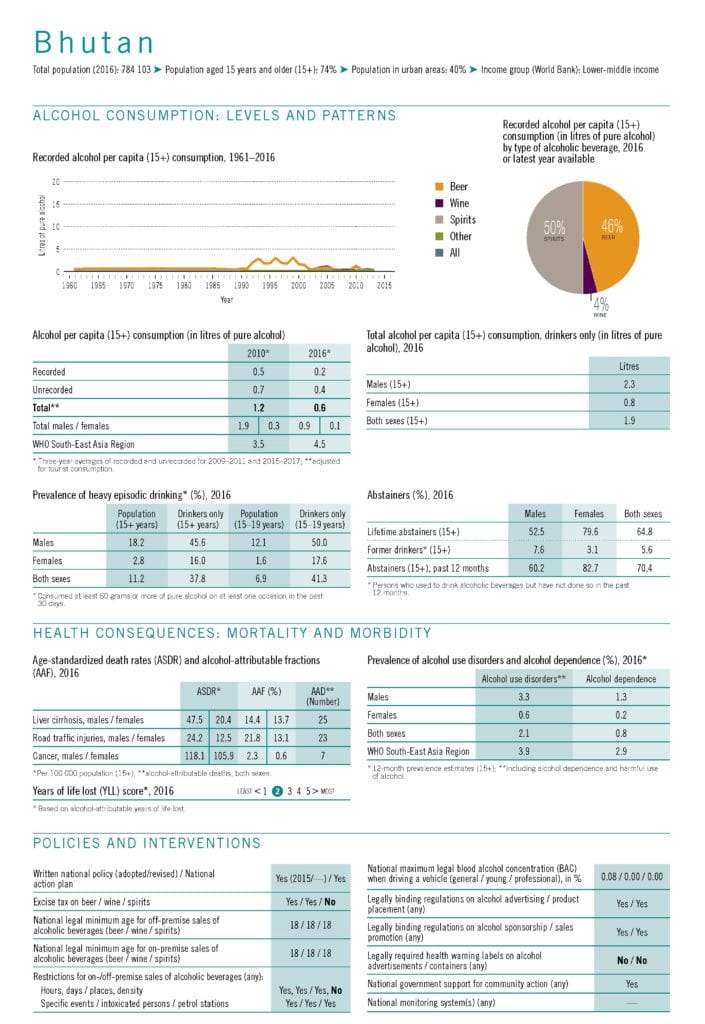Bhutan: Easy Alcohol Availability Major Issue
According to a new report, easily accessible, cheap industrial alcohol is a major challenge for alcohol control in Bhutan.
The report, prepared by the Good Governance Committee, was submitted for deliberation at the on-going 23rd session of the National Council (NC). It was reported that as of November 30, 2017 the number of bars had increased to 4,118.
As of 2017 August there are 15 licensed alcohol industries in Bhutan of which a majority of 10 was licensed between 2009 and 2018.
Currently, there is 1 alcohol outlet for every 177 Bhutanese in the country. The number of illegal outlets are also increasing. Bans exist for locally brewed alcohol and are strictly enforced, but the harm continues as industrial alcohol is available for cheap in many retail stores.
Massive alcohol harm fuelled by easy availability
- Alcoholic liver disease continues to be the leading cause of death.
- 514 people died between 2015 and 2017 from alcoholic liver disease.
- 6,529 traffic offences were related to driving under the influence of alcohol from 2016 to September 2018.
Easy access and affordability have been the main source of problem triggering relapses cases, including temptation for [alcohol use],” said Bumthang NC Nima, member of the Good Governance Committee as per Kuensel.
While ban on locally brewed alcohols is strictly enforced in the rural area, industrial alcohol is made freely available at cheaper rate in the market.”
Alcohol control in Bhutan
As WHO reports over one third of youth alcohol users between 15 to 19 years (41.3%) engage in binge alcohol use. As can be seen, Bhutan has a national alcohol control policy but spirits do not have excise taxes. The legal age for alcohol use is also at the lower end of 18 years – compared to other countries in the region.
Gaps in alcohol control and recommendations for the future
Gaps and challenges for alcohol control observed in the report were:
- weak enforcement of laws,
- weak coordination among implementing agencies, and
- lack of clarity among local governments on their enforcement authority.
The report added that laws are not implemented properly due to lack of human capacities and inadequate financial resources. As Bumthang NC Nima states other factors for increase in youth alcohol use were lack of communication with parents and lack of recreational activities for youth.
The committee also pointed out that there is a lack of adequate support for rehabilitation services, necessary aftercare services and social stigma surrounding the issue alcohol use disorders. Currently centres only cater to about 20% of the substance use disorder cases.
The committee recommended that government focus on addressing the issues, affirmative actions to ensure responsible parenting, affordable recreational facilities, rehabilitation services and to explore taxation and pricing policy.

